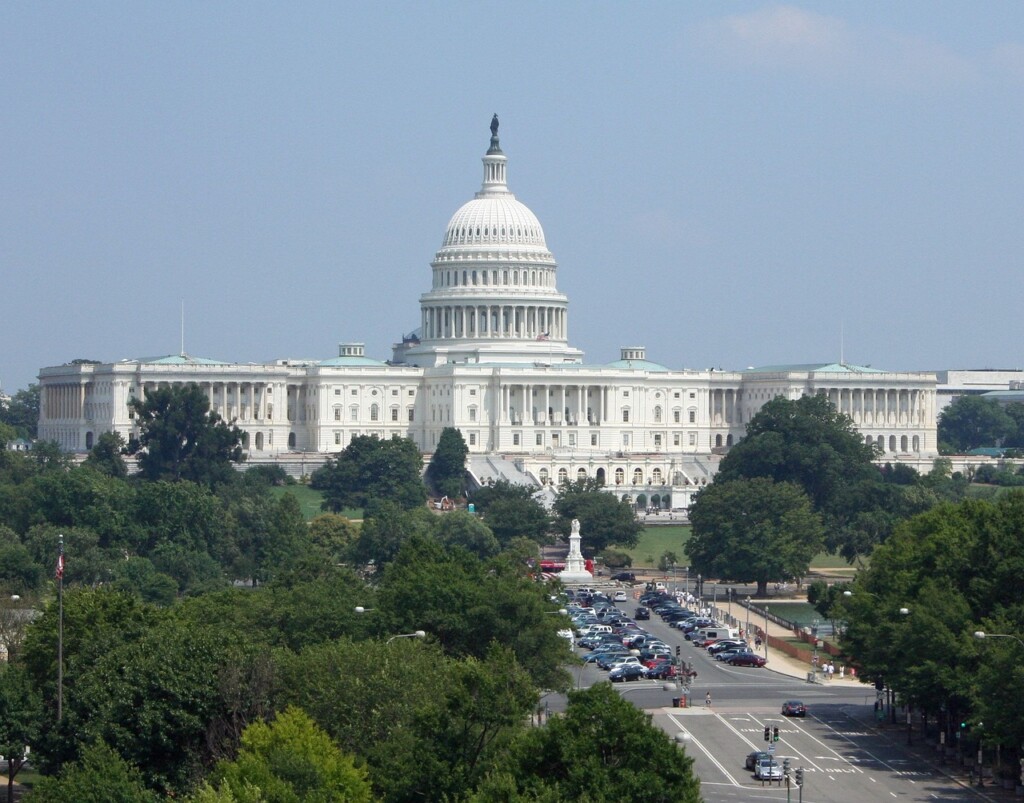Solar energy has emerged as a powerful and sustainable solution to the energy crisis faced by the world today. With continuous technological advancements and growing government support, numerous cities across the United States have made significant strides in the deployment of solar energy infrastructure. This article provides an in-depth exploration of the top solar cities in the US, focusing on how they’ve achieved their ranking, the impact of per capita solar installations, historical progress, and the policies or incentives that have influenced their solar journeys.
The solar capacity of a city can be a clear indicator of its commitment to renewable energy. However, understanding the how and why of their success requires a deeper dive into their individual strategies, policies, and unique geographic and socio-economic conditions. Let’s rank the top US solar superstars according to the Shining Cities 2022 report.

Los Angeles, with a total solar capacity of 649.9 MW, tops the chart, but with a per capita solar installation of 166.7 watts per person, it ranks 14th. LA’s success stems from a combination of abundant sunshine, progressive environmental policies, and strong city-level commitment to renewable energy. Over the years, LA has taken advantage of California’s robust state incentives, including the California Solar Initiative (closed in 2016), which provided upfront incentives for solar systems. The city has also benefited from the state’s aggressive renewable portfolio standard (RPS), aiming to reach 100% clean energy by 2045.
The state has also adopted proactive solar policies such as net energy metering, allowing solar panel owners to feed excess energy back to the grid in exchange for bill credits. This policy has been instrumental in encouraging homeowners to install solar panels and contribute to the state’s renewable energy goals. Moreover, state incentive programs have led to a solar transition for over a million roofs in California, reinforcing the city’s and the state’s standing in solar prowess.

San Diego, situated in Southern California, takes second place in terms of total solar capacity, with an impressive 468 MW. However, given its smaller population size compared to Los Angeles, it boasts a significantly higher per capita solar capacity, ranking third nationally. This achievement signifies the city’s success in leveraging solar power on an individual level, leading to a broader collective impact.
San Diego’s leadership in solar energy can be attributed to several key factors. Firstly, its geographical location provides ample sunshine throughout the year, an essential prerequisite for effective solar power utilization. Secondly, San Diego has demonstrated a strong commitment to renewable energy and climate action. This commitment is clearly outlined in its ambitious Climate Action Plan, which sets a goal for the city to use 100% renewable energy by 2035. Such targets stimulate both public and private sector efforts towards renewable energy adoption, including solar power. Additionally, San Diego benefits from the overall renewable-friendly policies of California. These include financial incentives for solar installations, net metering, and a robust Renewable Portfolio Standard, all of which have encouraged residents and businesses to install solar panels.

Of the solar cities in the US, Las Vegas holds the third spot, with a total solar capacity of 442.8 MW, and an even more impressive second place in per capita solar capacity. The city’s significant solar achievements can be attributed to a combination of local efforts and state-wide renewable energy policies. Nevada’s aggressive Renewable Portfolio Standard (RPS), which requires 50% of the state’s power to come from renewable sources by 2030, has undoubtedly served as a powerful driver for Las Vegas’s solar growth. This policy stimulates both utilities and individuals to invest in renewable energy sources like solar power, thereby pushing the entire state, including Las Vegas, towards a more sustainable energy future.
Moreover, Las Vegas’s geographical location in the Mojave Desert provides the city with abundant year-round sunshine, an invaluable asset for solar power production. Beyond state policies and natural advantages, Las Vegas has taken local initiatives to boost its solar power usage. The city has invested in major solar installations at its municipal buildings and facilities, setting an example for businesses and residents. These installations not only contribute to the city’s total solar capacity but also highlight the city’s commitment to renewable energy, motivating other entities to follow suit. By doing so, Las Vegas has managed to capitalize on the opportunities presented by solar power, leading to its high rank on the solar cities list.

Honolulu, HI, despite being fourth in total solar capacity at 397.8 MW, proudly holds the top spot in per capita solar capacity. This achievement signifies that while the total installed solar capacity may be less compared to other cities, a larger proportion of Honolulu’s residents are harnessing solar power. Geographically, Honolulu is blessed with abundant sunshine throughout the year, providing a naturally conducive environment for solar energy generation. However, it’s not just the city’s natural attributes that have driven its success in solar energy, but also proactive policies and programs.
Hawaii’s commitment to achieving 100% renewable energy by 2045, one of the most ambitious targets in the country, has been a key driver in promoting renewable energy investments across the state. Coupled with this, Hawaii has implemented various incentives to encourage solar adoption, including a generous 35% state tax credit for wind and solar energy systems. In addition, Honolulu extends support to its solar owners by offering a property tax exemption, making it even more enticing for residents to invest in solar energy. Furthermore, Honolulu’s solar success can also be attributed to its commitment to green building practices, which often incorporate solar power, and its programs that promote solar water heaters in homes.

San Antonio, Texas, ranks fifth in terms of total solar capacity with 354.9 MW, and has a per capita solar rank of 6th. Its success in solar energy is a testament to the city’s efforts to diversify its energy sources and embrace sustainability.
San Antonio’s publicly owned utility, CPS Energy, has been instrumental in promoting solar power in the city. The utility’s Save for Tomorrow Energy Plan (STEP) aimed to save 771 MW of electricity by 2020, and solar power was a major component of this plan. CPS Energy also has a Solar Rebate Program, offering incentives for residential and commercial solar installations. Moreover, San Antonio has been a pioneer in innovative solar initiatives like community solar projects, which allow customers to benefit from solar energy without installing panels on their property. The city also hosts large-scale solar farms, contributing to its overall solar capacity.

New York, the sixth-ranked city in total solar capacity with 354.4 MW, holds a less impressive per capita rank (38th), primarily due to its high population density. Despite this, New York’s progress in solar energy is commendable, considering the city’s urban density and the challenges of retrofitting existing buildings for solar. The city’s solar accomplishments can be attributed to the NY-Sun Initiative, a state-wide program providing financial incentives for solar installations. Moreover, New York City has its own ambitious target of installing 10 GW of solar capacity by 2030, highlighting its commitment to solar energy.
Another key driver is the city’s mandate for solar systems on new buildings, a part of the Climate Mobilization Act. Also, the state’s net metering policy and property tax abatement for solar have been significant incentives. While New York faces unique challenges, its progress to date and commitment to future growth demonstrate the city’s determination to leverage solar power.

Phoenix, Arizona, ranks seventh in total solar capacity at 342.0 MW and ninth in per capita ranking. Phoenix’s success is due in large part to its geographical advantage of having over 300 sunny days per year, which makes it a prime location for solar power generation.
Moreover, Arizona’s Renewable Energy Standard and Tariff (REST) policy mandates utilities to derive 15% of their power from renewable sources by 2025. This has driven increased adoption of solar power across the state. Additionally, net metering policies in Arizona have incentivized homeowners to install solar panels, providing them with bill credits for excess power fed back to the grid. Phoenix’s city government also has shown strong commitment to solar energy, with various municipal buildings and facilities adopting solar power. Furthermore, local utility Arizona Public Service offers solar incentives, such as the Solar Partner Program which credits customers for allowing the utility to install solar panels on their rooftops.

San Jose, California, ranks eighth in total solar capacity at 290.9 MW and fifth in per capita ranking. Similar to other Californian cities, San Jose benefits from the state’s proactive renewable energy policies and incentive programs. These include net metering, property tax exemptions for solar energy systems, and rebate programs under the California Solar Initiative.
San Jose has also established its own ambitious renewable energy goals. The city’s Climate Smart San Jose plan envisions the city running on 100% clean energy by 2050. The city has also adopted reach codes that mandate new buildings to be all-electric, which will spur greater integration of solar power.

Albuquerque, New Mexico, ranks ninth in total solar capacity at 166.8 MW, but impressively ranks fourth in per capita solar installations. This achievement shows a strong penetration of solar power among the city’s residents. New Mexico’s abundant sunshine and the state’s Renewable Portfolio Standard, which requires utilities to source 50% of their power from renewable energy by 2030, contribute significantly to the city’s solar success.
Local initiatives also play a role in Albuquerque’s solar achievements. The city’s “Solarize Albuquerque” campaign is aimed at making solar power more accessible and affordable for its residents. Moreover, Albuquerque has a commitment to getting 25% of its energy use in city-owned buildings from solar power by 2025.

Washington, DC, ranks tenth in total solar capacity at 140.2 MW but impresses with its per capita ranking of 10th. The city’s solar success can be attributed to the aggressive renewable energy targets set by the District of Columbia. The city aims to achieve 100% renewable energy by 2032, one of the most ambitious targets in the nation.
The Solar for All program, aimed at providing the benefits of solar electricity to 100,000 low-income households, and the Renewable Portfolio Standard Expansion Act, which includes incentives for solar energy, have been critical drivers for solar adoption in DC. Additionally, the District of Columbia Sustainable Energy Utility offers incentives for solar installations. The combination of strong governmental policies, incentive programs, and community engagement makes Washington, DC, a leading city in the adoption and growth of solar power.
California continues to be a leading powerhouse in solar energy, not only in the U.S but globally as well. With an average of 150 sunny days per year, the state has a natural geographical advantage that it fully exploits to generate solar power. The total installed solar capacity in California is more than any other state, enough to power millions of homes and contribute significantly to the state’s grid.
But it’s not just sunshine that makes California the solar capital. It’s the result of years of proactive policies, investments, and a strategic approach to building a robust renewable energy sector. The state’s government has consistently prioritized renewable energy, establishing initiatives such as the California Solar Initiative and aggressive Renewable Portfolio Standards, which have incentivized solar installations. California’s thriving solar job market is another major factor contributing to its success. The state is home to a large number of solar companies, ranging from manufacturers and installers to project developers and financiers, which creates a virtuous cycle of investment, innovation, and installation. All these factors combined make California the most solar-friendly state in the nation. Arizona, despite having fewer total solar installations than California, is quickly becoming a solar powerhouse thanks to its status as the sunniest state. It has leveraged this geographical advantage to power nearly a million homes with solar energy and is expected to continue its solar growth in the coming years.
Despite having a climate that could be conducive to solar energy production, North Dakota is currently one of the least solar-friendly states. The state has a total solar installation of only two megawatts, a minuscule figure compared to leading states. This low level of solar adoption restricts North Dakota’s solar job market, limiting opportunities for growth and development in the sector. North Dakota’s underutilization of solar power can be attributed to several factors. These may include lack of state-level incentives or policies encouraging solar energy adoption, a focus on other forms of energy production, and perhaps a lack of public awareness or interest in solar power.
Moreover, North Dakota’s energy market has traditionally been dominated by fossil fuels, with the state being one of the leading producers of crude oil in the U.S. This could potentially create less political and economic motivation to invest in and promote renewable energy sources such as solar. Overall, while the physical potential for solar power exists in North Dakota, it appears that the necessary policy, investment, and societal conditions for a thriving solar energy sector have not yet been fully realized.
While California is a clear leader with a staggering solar capacity of 37,086 MW (Statista), several other states have also embraced solar power and are creating significant numbers of jobs and economic activity as a result. Texas, for instance, ranks second in total solar capacity, boasting 15,079 MW. This substantial growth is driven by the state’s abundant sunshine, relatively low solar installation costs, and progressive energy policies that have opened up the market to renewable sources. As the demand for solar installations continues to grow, so too does the need for skilled workers in the field, contributing to a thriving job market.
Florida, aptly named the Sunshine State, leverages its solar-friendly climate and has a solar capacity of 9,539 MW. Alongside its geographical advantage, Florida has a range of policies and incentives in place that encourage the adoption of solar power. These efforts have not only boosted solar installation but also stimulated job creation in the sector. North Carolina and Arizona also have thriving solar markets, with solar capacities of 8,018 MW and 5,984 MW respectively. North Carolina’s success can be attributed to its proactive renewable energy policies, while Arizona’s achievement is largely due to its high solar irradiance.
Nevada, with its abundant sunshine and supportive state policies, has a total solar capacity of 5,003 MW. Its commitment to achieving 100% renewable electricity by 2050 has created significant opportunities for solar companies and workers. Georgia and New Jersey, with their solar capacities of 4,566 MW and 4,097 MW respectively, show that solar power can thrive in diverse climates and geographies. Georgia’s rapid solar expansion can be attributed to the state’s Renewable Energy Development Initiative, while New Jersey’s success is linked to its Solar Renewable Energy Certificate (SREC) program. Finally, Massachusetts, despite its less sunny climate, has developed a robust solar market with a total capacity of 3,987 MW. The state has achieved this through innovative solar-friendly policies and incentives, proving that commitment and strategy can overcome geographical disadvantages.
Overall, these states demonstrate that with the right combination of policies, solar incentives, and a commitment to renewable energy, it’s possible to build a thriving solar market that not only contributes to environmental sustainability but also stimulates economic activity and job growth.
There is an undeniable upward trend in the adoption of solar power across the United States, as more and more homeowners realize its environmental and monetary benefits. The landscape of solar power use across the country is diverse, with states like California leading the pack and others like North Dakota lagging. However, as incentives increase and costs potentially decrease, it’s expected that the use of solar power will continue to rise. As we move towards a future driven by sustainable energy, solar power remains a strong contender in the race.
As of 2022, California has the highest solar capacity in the U.S., boasting a solar capacity of 37,086 megawatts.
Massachusetts’ solar market thrives due to innovative solar-friendly policies and incentives, demonstrating that commitment and strategy can overcome geographical disadvantages.
Stay a while and read more posts like this
In recent years, Europe has witnessed a remarkable surge in the adoption of solar panels, marking a pivotal shift towards renewable energy. Data from the...
Renewable Energy, Solar Energy, Solar Energy Basics, Solar Technology
“Unlock the Truth: Get the Facts on Solar Energy!” Introduction Solar energy is becoming increasingly popular as a renewable energy source, but there are...
Imagine a world where you’re able to cut your monthly energy expenditure substantially. A reality where your home isn’t reliant on finite,...